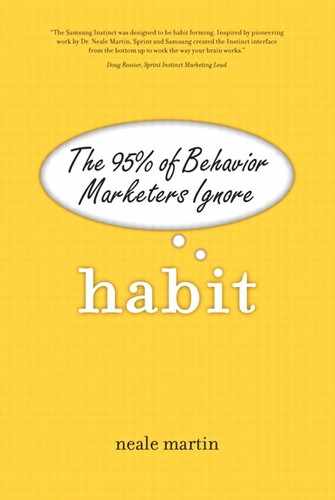A Norman Door into the Two Minds of the Customer
Donald Norman has become synonymous with poor design. He continuously receives communications from readers who have discovered a “Norman door” or a “Norman switch,” which are devices that challenge the cognitive skills of the user. On his web site (www.jnd.com) and in books and articles, Norman serially chronicles poorly designed products. He can find design flaws in a hotel door in Amsterdam or the layout of a building in London, but his forte is in the world of high technology. To combat what he sees as the creeping complexity of technology-driven products such as the iDrive, Norman has long championed human-centered design.
“There is a difference between complicated and complex,” he explained to me in a wide-ranging discussion. “Complexity is not the problem; that’s what’s on the inside of the box. The problem comes when we make what’s on the outside of the box complicated.” When I asked him if complicated interfaces were simply a product of complex technology or numerous vendors collaborating on the same device, he bristled. Norman sees the failure to understand and design for the habitual mind as a recurring theme in the information age.
“Overly complicated interfaces are the product of poor design,” he insisted, “though they can also occur as a byproduct of organizational structure. Companies have different goals than do their customers. Take cell phones—the handset manufacturers have one set of goals, the wireless service providers a completely different set of goals. And there are other parties involved who create applications, and still others that make accessories. The poor customer is left befuddled.” He used a camera phone to make the point.
“When you take a picture with your telephone, the task is pretty clear. You want to save, throw away, or email the picture. You don’t want to go through a series of menus to select the right action; you want those choices right there, right in front of you. A task-oriented design would do just that. A logically oriented design would have everything neatly tucked away in menus, unnecessarily complicating your life.”
Norman refers to the underlying design philosophies as taxonomic versus “taskonomic.” A taxonomic approach creates categories and subcategories that group like things together, while a taskonomic method organizes around the activity. “Taxonomic structures are appropriate outside of contexts—for example, in libraries and hardware stores. But they are ill suited for supporting an activity,” Norman explained. “In a hardware store, nails are put with other nails, but when a carpenter is working on the job, the nails are kept next to the hammer.”
When I asked him if the taxonomic approach is a byproduct of the company’s organizational chart, he agreed: “There is an old saying that the organization of a product reflects the organizational structure of the company.”
For Norman, there is no reason to think of taxonomic and taskonomic orientations as mutually exclusive. Companies must understand when to design for the executive mind and when to design for the habitual mind.
For Norman, good design appeals to the multiple minds inside the brain. In his book Emotional Design, he identifies this as processing a product on three levels: visceral, behavioral, and reflective. These layers correspond to the dinosaur brain, the limbic system, and the cerebrum.
According to Norman, the visceral layer is reflexive and fast, with virtually no processing involved. The behavioral level can involve highly complex scripts reflecting learned behavior, but it is not conscious. In Norman’s view, conscious thought is the exclusive territory of the reflective level but does not directly influence behavior. “The reflective level is the top, conscious self, but it doesn’t directly access sensory input. It monitors and influences but does not directly control.”
Norman’s message to work with the conscious and unconscious minds is directed primarily at designers, but its relevance to marketers, managers, and executives is equally valid. At one point in our discussion, I began a comment with, “If executives accept this premise ...” and he completed the thought with, “they will have to reorganize the company.”
The organizational structure of the firm should reflect the optimum approach to the marketplace, with a high priority on serving a well-defined group of customers. If your company’s organization is geared to the executive mind, there is a good chance that your products are as well.
